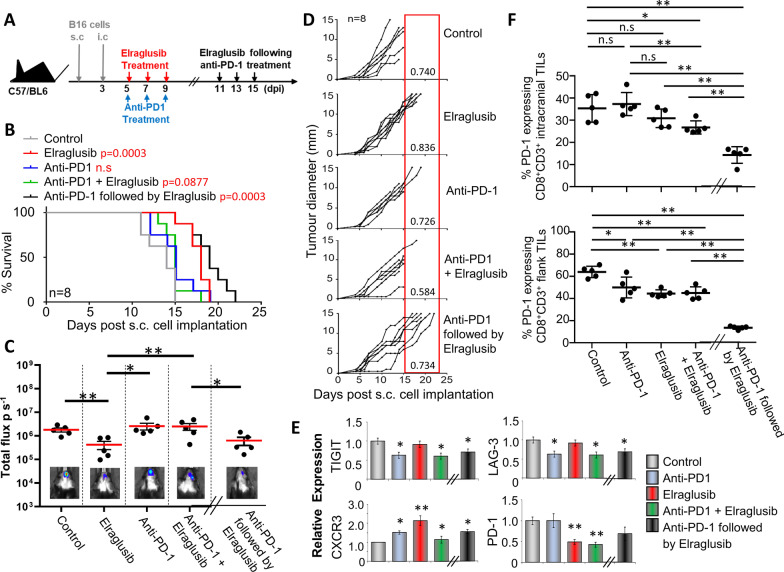Fig. 6.
Sequential treatment of anti-PD-1 therapy followed by Elraglusib significantly reduces growth of B16 melanoma. A Schematic representation of treatment regime. B Survival curves of mice with and without treatment as indicated (n = 8; total number of mice: 40). P values shown in Additional file 3: Table 3. C B16 metastasis at day 10 (treatments on the left) or Day 16 (sequential treatment on the right) with total flux (photons/second) values depicted in the histogram. Luminescent image (bottom) shows 1 example of each group (n = 5 mice per condition). D Tumour growth curves (n = 8 mice per condition). E Transcription of PD-1, LAG-3, TIGIT and CXCR3 in splenic CD8 + T cells from mice treated as shown. F % of CD3 + CD8 + tumour infiltrating cells expressing PD-1 as determined by flow cytometry (n = 5). (B-D) Represent two pooled experiments (E–F) Data shown from one individual experiment, representative of two independent experiments. Samples taken at day 10 (treatments on the left) or day 16 (sequential treatment on the right). Groups are compared using unpaired t test. *p < 0.05, **p < 0.01, ***p < 0.001. Data are represented as mean ± SEM

